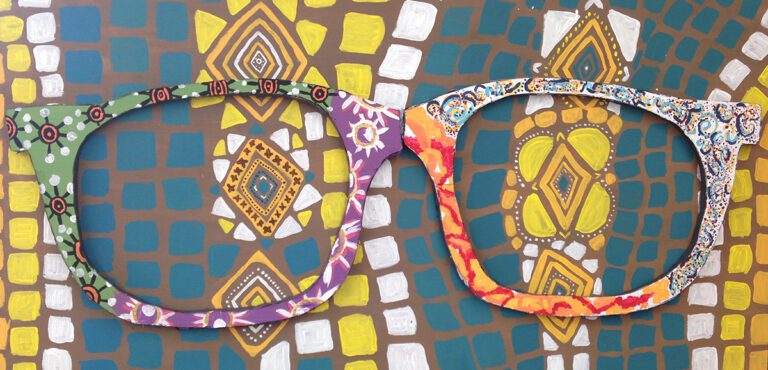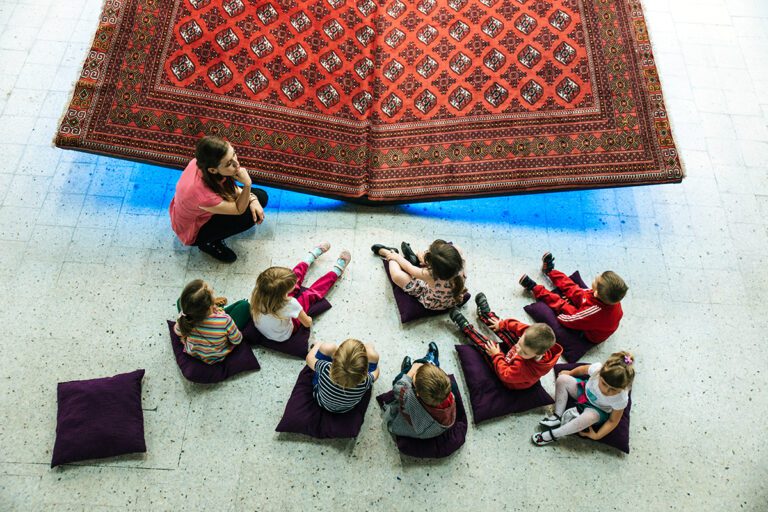As art educators, it’s our responsibility to keep the learning in our classrooms fun and exciting for students. It’s important for us to continue learning and growing so we can be the best we can be for our students. I like to think of teaching as a constant educational adventure!
When I began teaching AP Art, I noticed the critique method I was using with my students began to feel a bit old and forced. We were continuing to critique our work in the same way week in and week out. I knew we had to do something different—after all, I wanted my students to enjoy sharing their hard work. It was then that I came across the PechaKucha approach. Today I’d love to share how using ideas from the PechaKucha approach changed the way my students think about critique and why you should consider bringing similar ideas into your classroom.
The History of PechaKucha
The history behind PechaKucha started with a group of architects in Tokyo. They decided they wanted to shorten the speaking time of the presenters at their meetings. So, they invented something called PechaKucha 20X20.
The idea of PechaKucha is all about creating concise presentations. The first event was held in 2003 as an event for designers to meet, network, and show their works in public. Over the years, it’s grown into a phenomenon with PechaKucha events being held in hundreds of cities around the world.
During a PechaKucha presentation, the presenter shows twenty images for twenty seconds each. The slides advance automatically, so things move at a rapid pace.
Using the Idea of PechaKucha in the Classroom

As I learned more about the technique, I realized this is the perfect setup to use for a classroom critique.
The format gives students a strict structure to adhere to and keeps each speaker from taking too much time. It’s perfect for those of us with short class periods who never feel like we have enough time with our students.
Although I personally used this idea with my AP students to help them talk about their AP portfolios, you could certainly use it with other ages as well. Plus, the uses can reach far beyond critique!
Here are 3 Ideas to Try
- Have each student in the class choose one work of art to put into a slideshow. When their slide appears, let them speak about it for twenty seconds!
- Divide students into groups. Have each group choose an artist or theme. Then, have them put together five to ten slides that contain work by the artist or work connected to the theme. Make sure each student in the group takes a speaking role as the group presents to the class.
- In the brainstorming phase of a group project, have each group put together three idea slides. Have them present each slide for twenty seconds to the group and ask for feedback.
Holding a PechaKucha Event
If you’d like to take things a step further, you can host your own PechaKucha event. Be sure to check out the FAQ page of the website for more details about how to go about organizing an event.
The Results
No matter what avenue you take, bringing the idea of quick presentations into your classroom can have a big impact. I asked some of my AP students to share their thoughts about the experience.
Overall, they felt excited to present their work and not have to “talk” too much about it. Many students took the opportunity seriously and really practiced what they were going to say. This exercise not only helped them in future critiques but also helped them on the writing portion of their AP portfolio submissions.
I found this to be a wonderful tool in helping my kiddos reflect on the artmaking process as well as their completed artworks. But don’t take my word for it!
Here is what 3 of my students had to say about the process.

Doo L. (Age 16)
Creating a PechaKucha presentation helped me with my interviewing skills because I had to think quickly on my toes and be precise as I was describing my AP artworks in twenty-second increments. It was more work than I thought it would be, but it helped me immensely.
Eyoel T. (Age 17)
I enjoyed the PechaKucha experience because it helped me with my presentation skills while forcing me to stick to the point and not digress from the essence of my artwork. I really liked how my art spoke for itself!
Reed R. (Age 16)
Given only twenty seconds per image, I had to really “soak in” the art, noticing the details, really seeing the elements and principles. This presentation approach forces you to observe art, not just “see” it!
Overall, using the PechaKucha idea in the classroom has many benefits. In my AP courses, it allowed students to share their work in a meaningful but concise way. However, it could be used in other formats to help students talk about work, ideas, art history, and more. If you’re looking for a means to showcase more art with less talk, give it a try!
How do your AP students critique their art?
Have you ever considered using the PechaKucha presentation method with your art students?
Magazine articles and podcasts are opinions of professional education contributors and do not necessarily represent the position of the Art of Education University (AOEU) or its academic offerings. Contributors use terms in the way they are most often talked about in the scope of their educational experiences.





